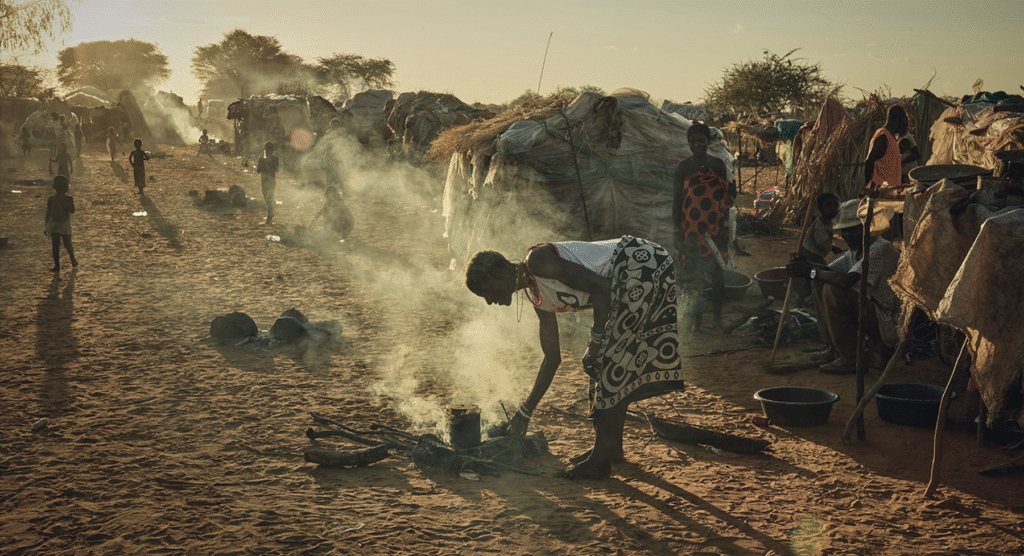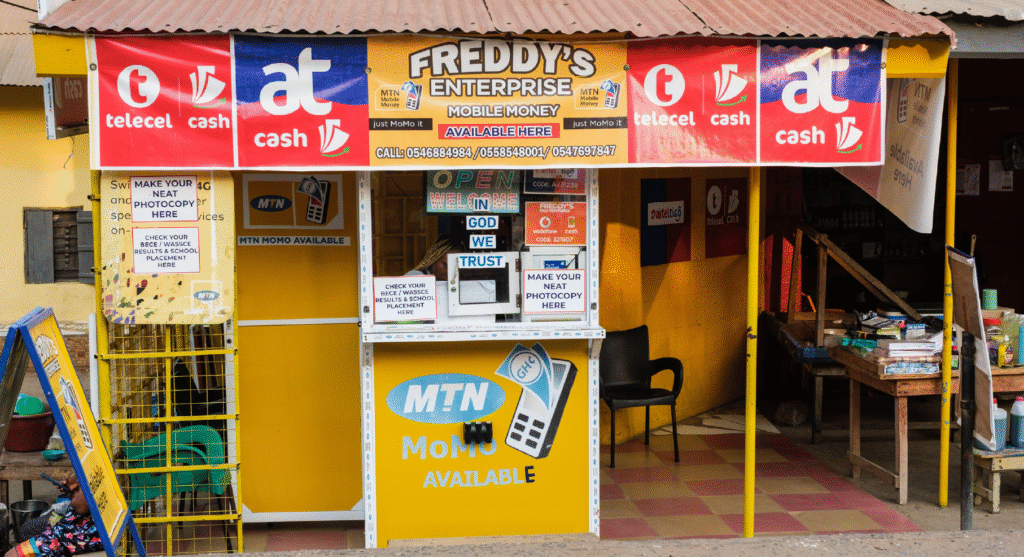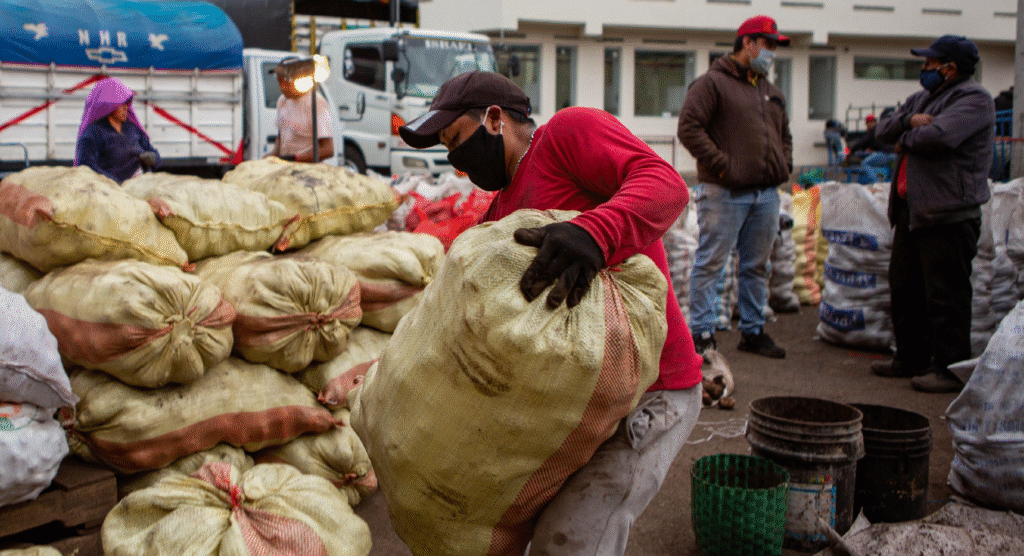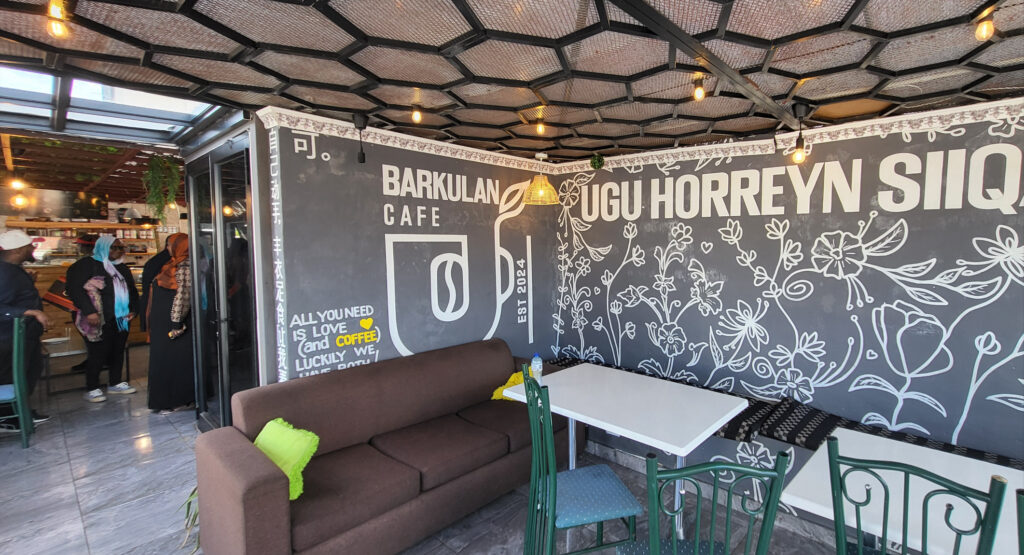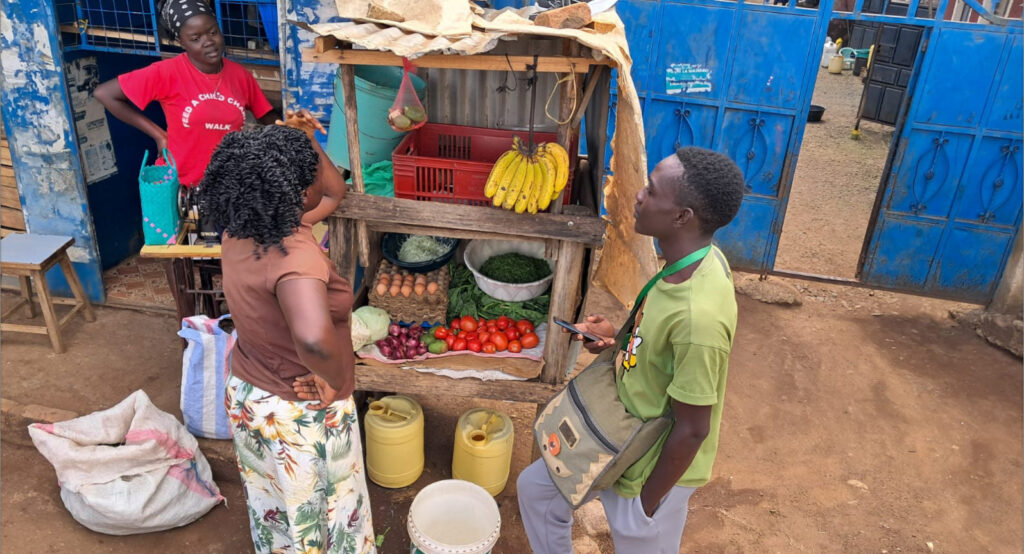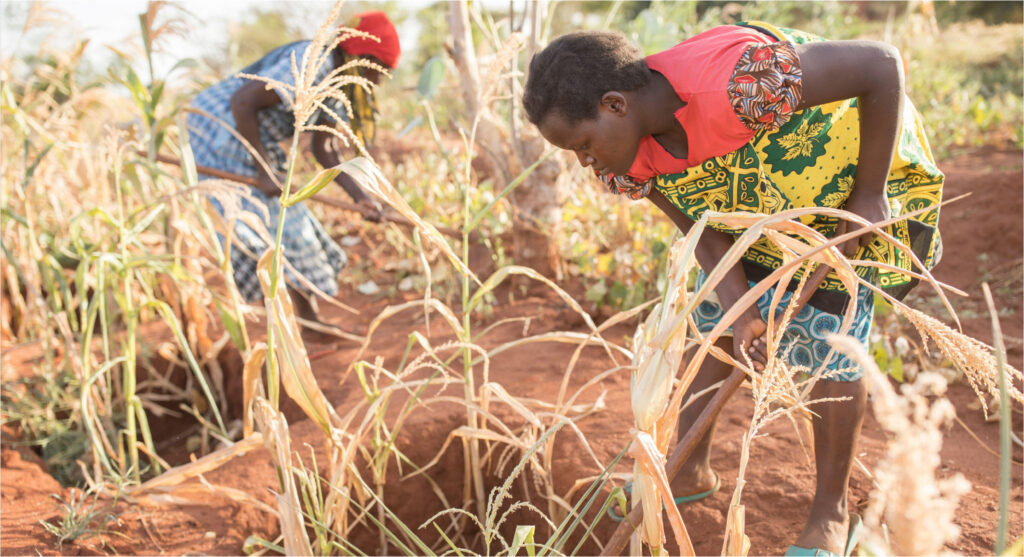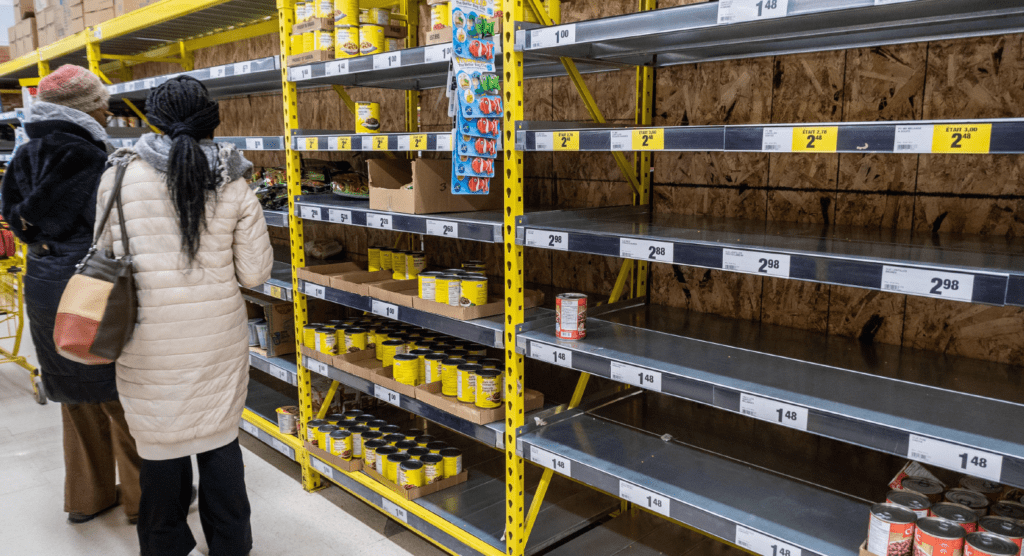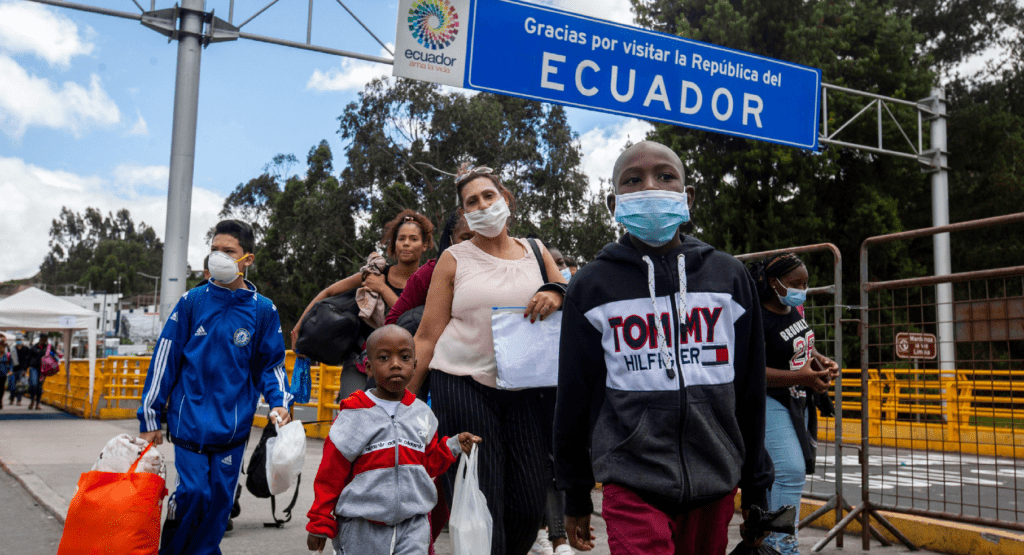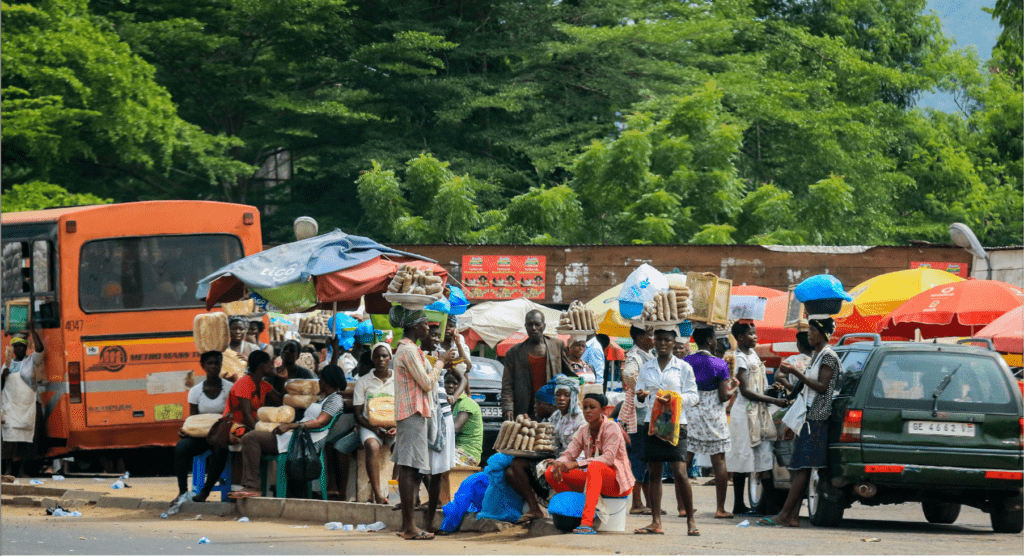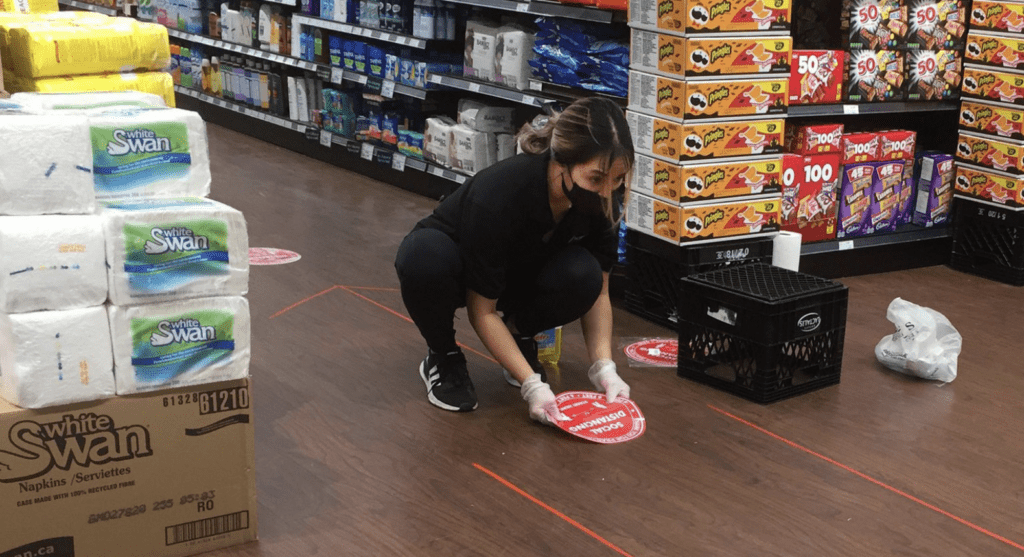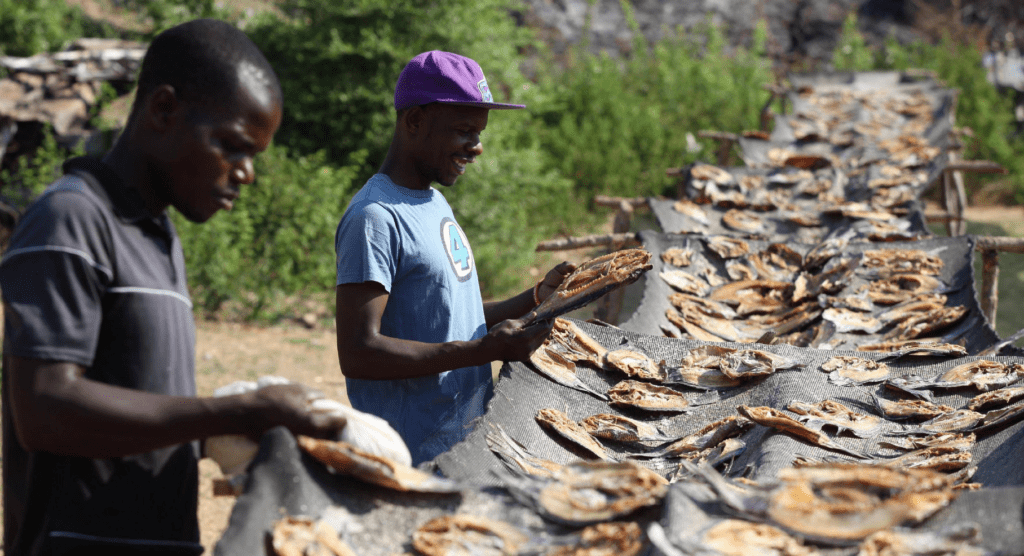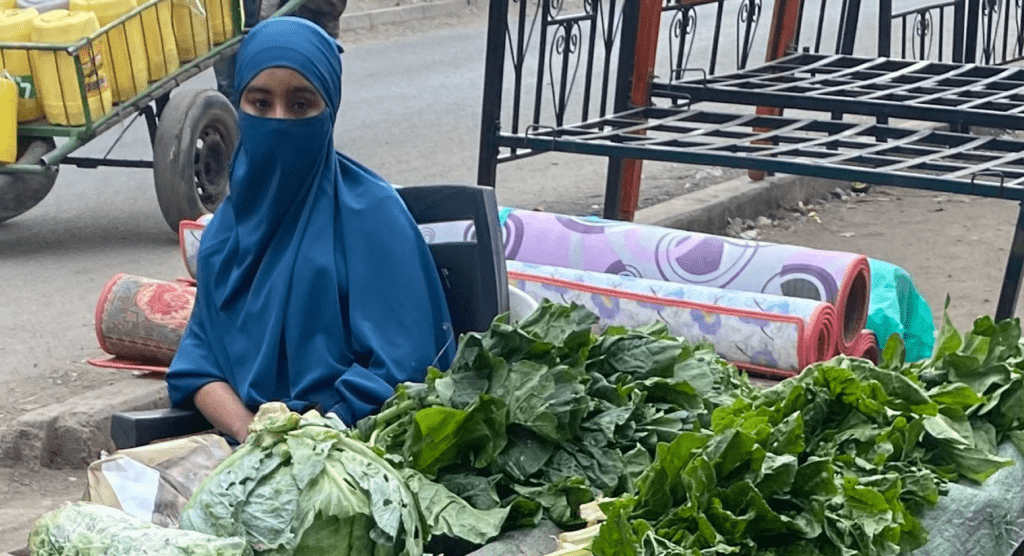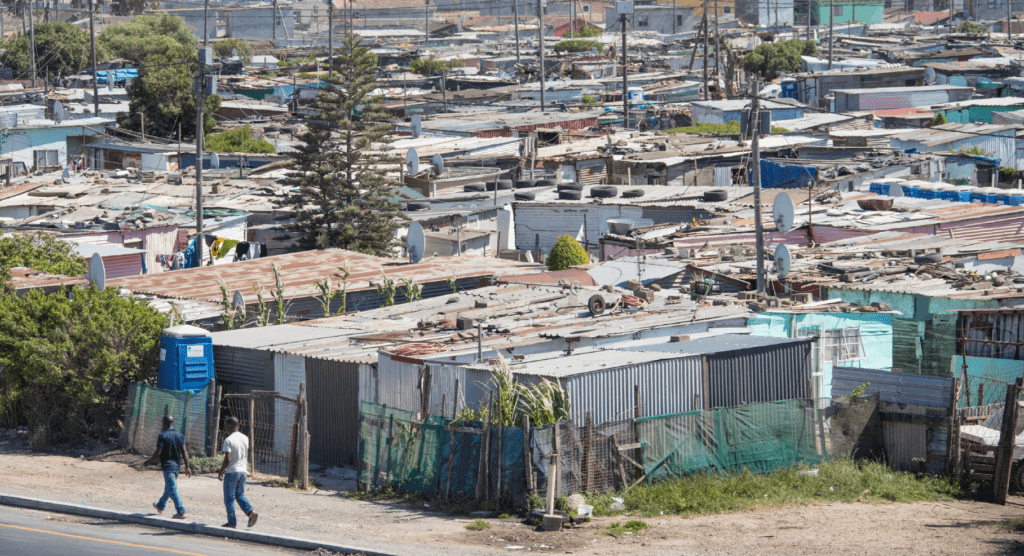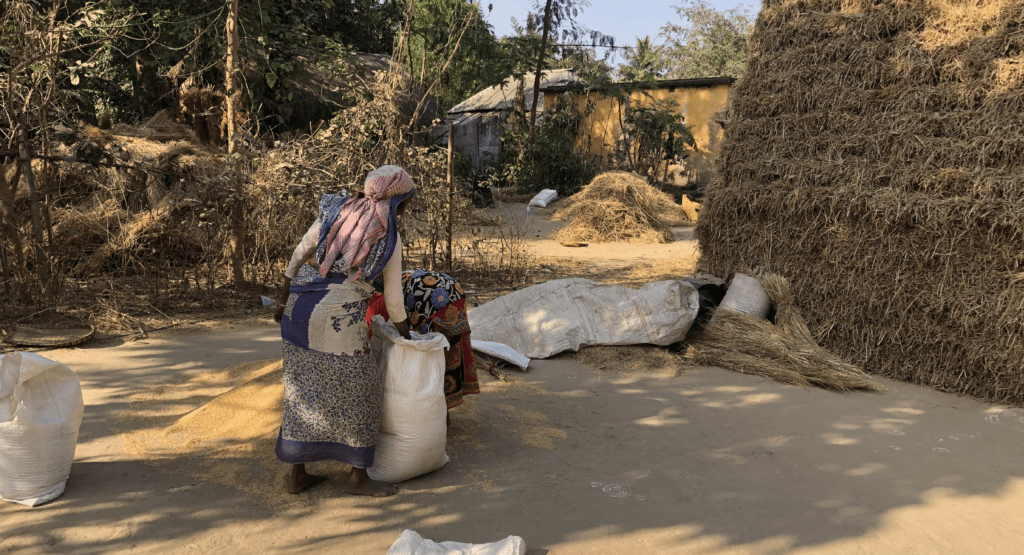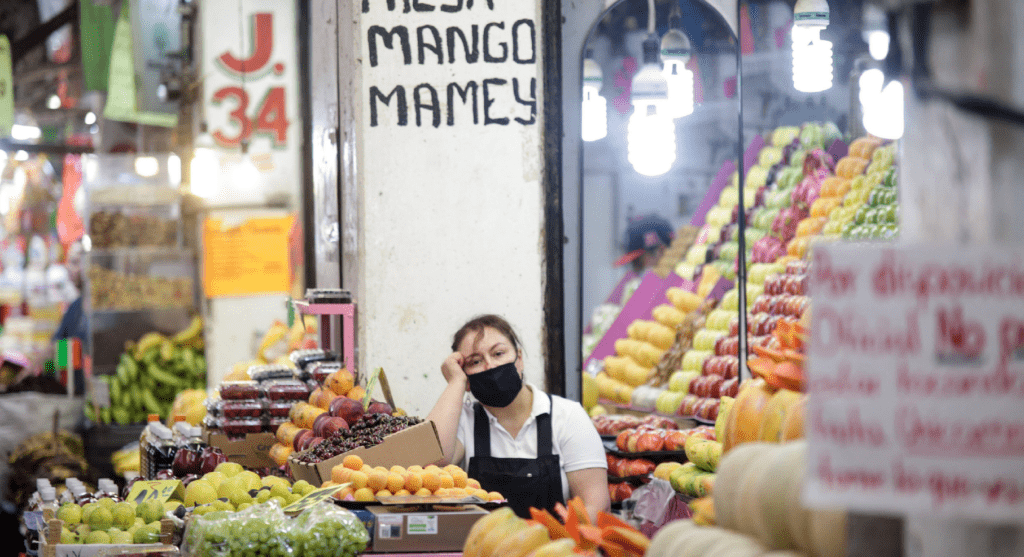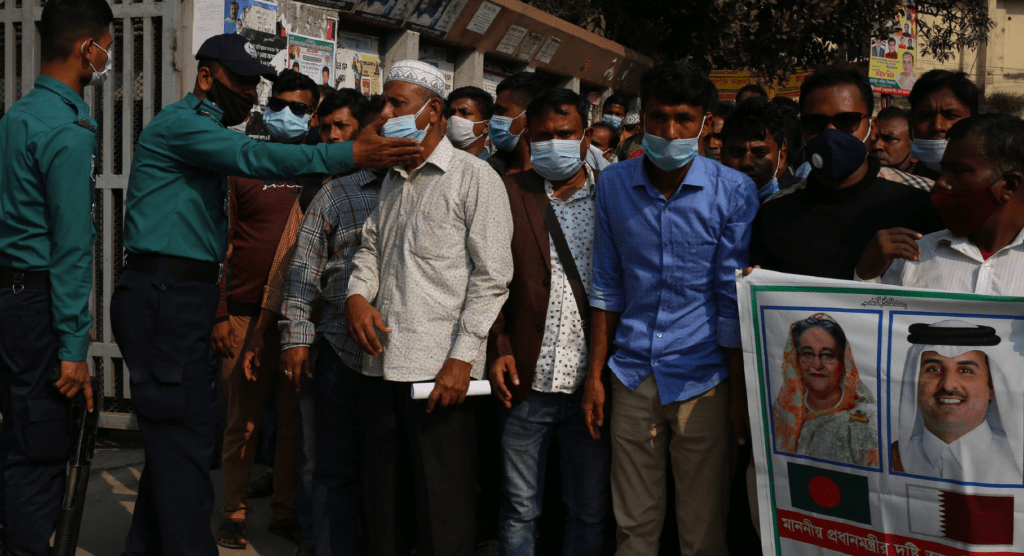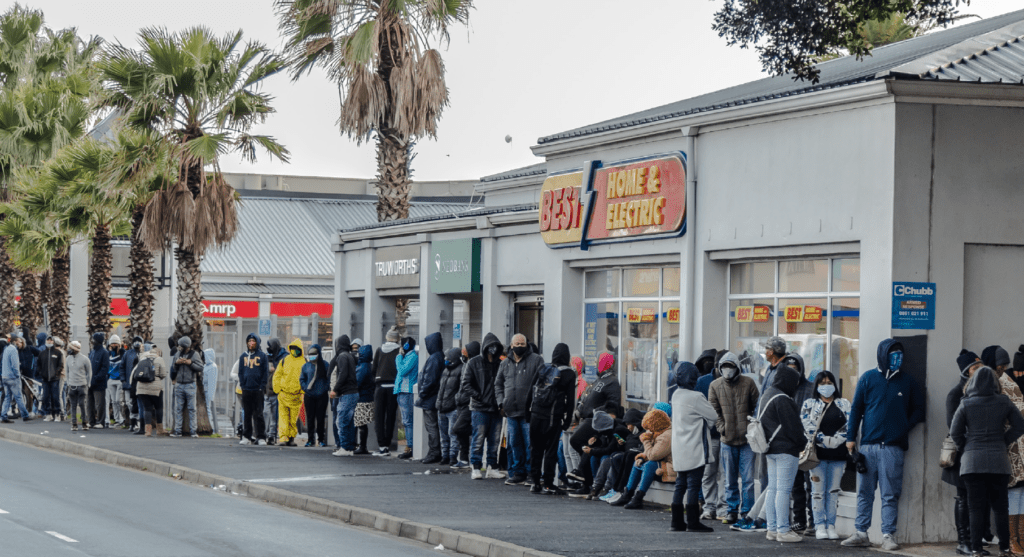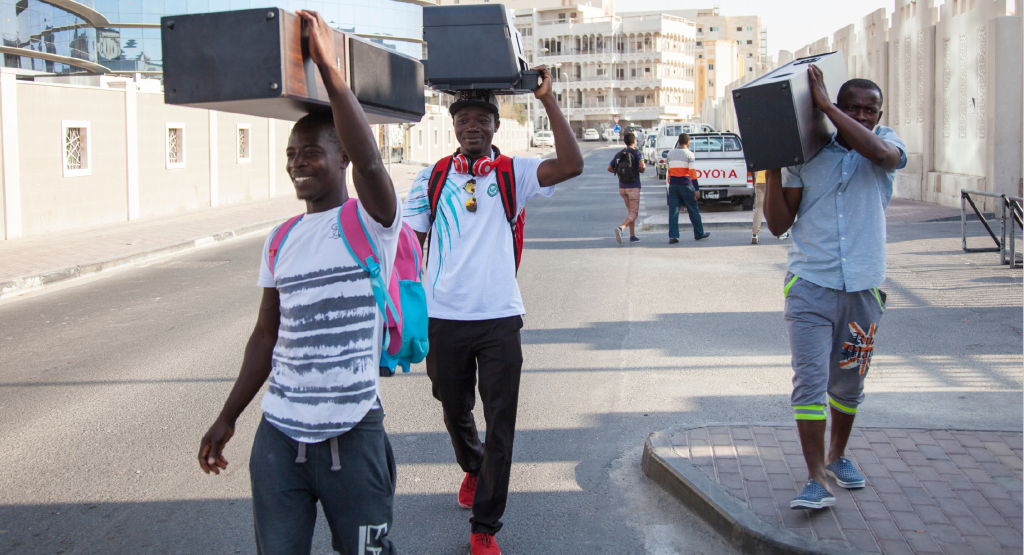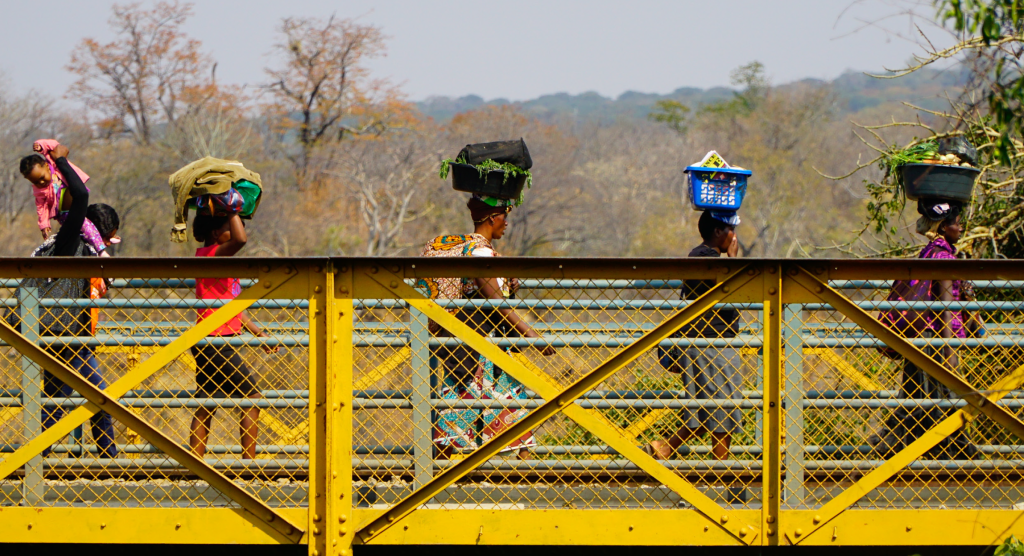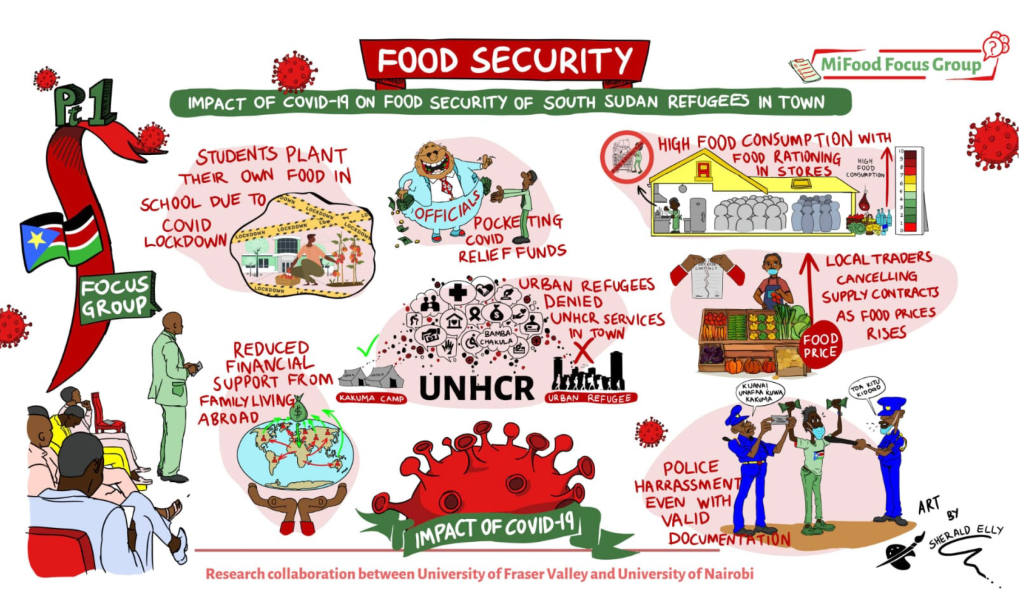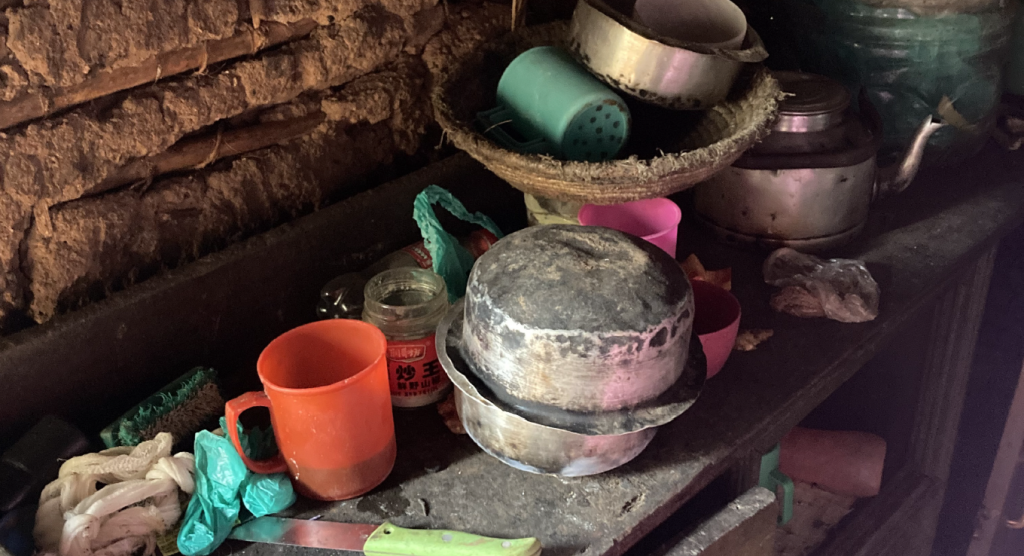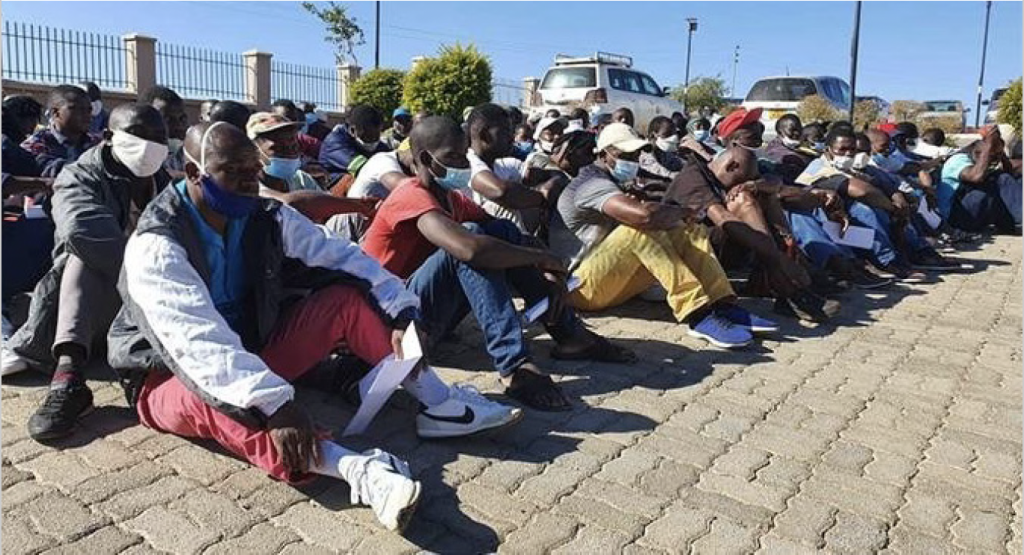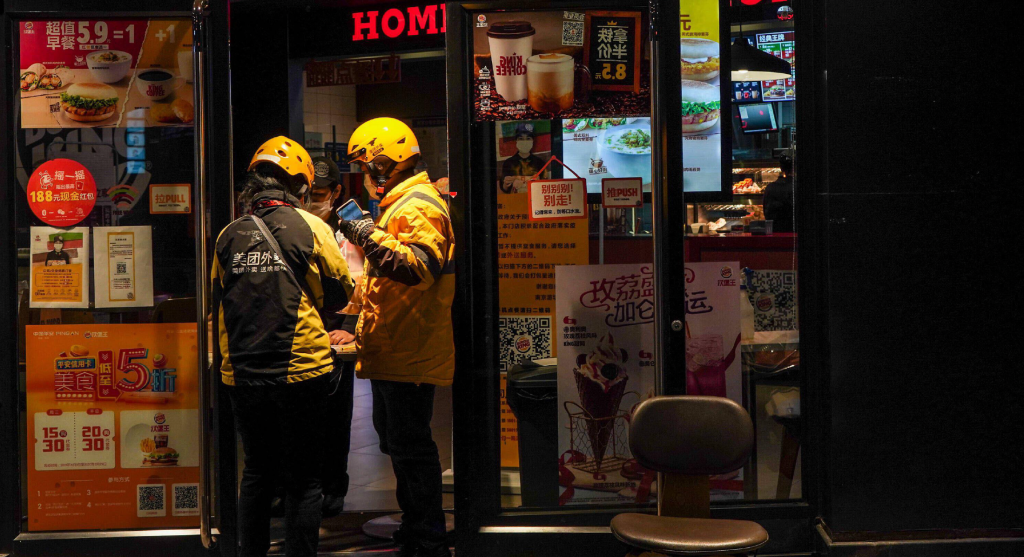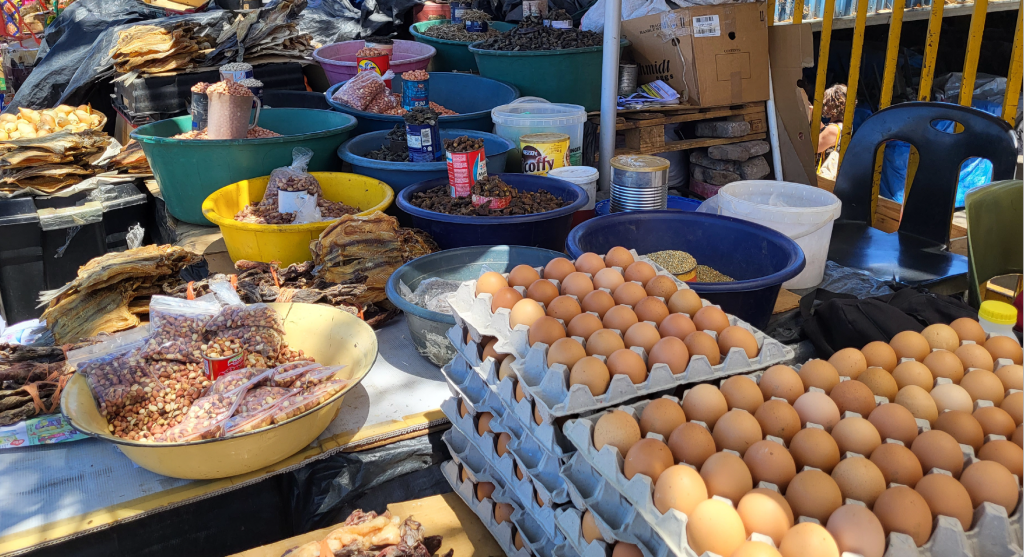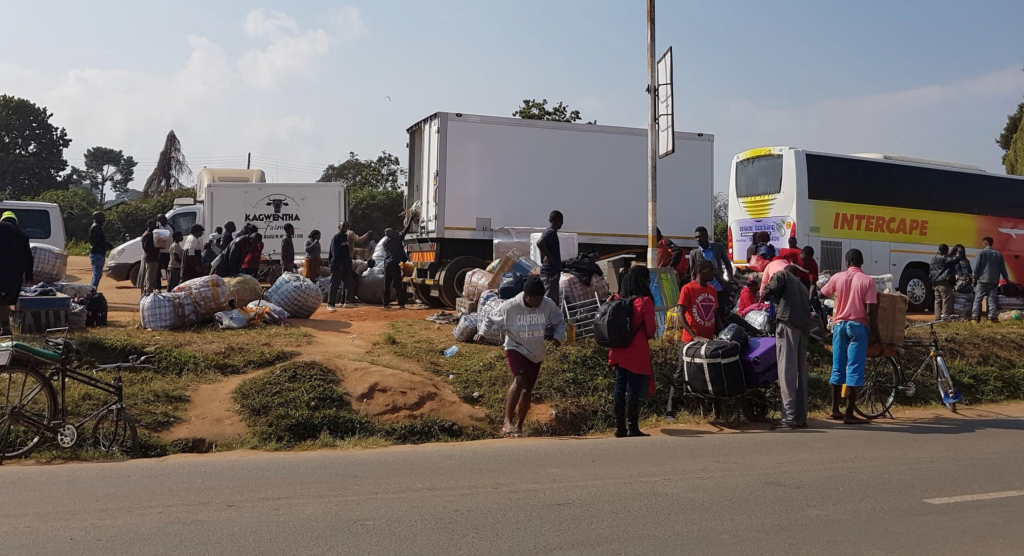MiFOOD PAPERS
Access full versions of the MiFOOD Papers below or read summaries of key research findings on the MiFOOD Blog.
MiFOOD PAPER 43
Migration, Food Insecurity and Angolan Migrants in Namibia
This study examines the food security challenges faced by Angolan migrants in Namibia, focusing on the interplay between migration, livelihoods, and food insecurity. Drawing on survey data from households in Northern towns and the capital city of Namibia, the research reveals high levels of food insecurity among Angolan migrants, characterized by limited dietary diversity and a reliance on coping strategies…
MiFOOD PAPER 42
Remittance Practices, Digital Technologies and the Ghana-Canada Migration Corridor
Migrant remittances have been recognized as vital resources for the well-being of recipient households and communities, as well as for sustainable development in the Global South. However, these flows can be impeded by limitations in the infrastructure, financial systems, and regulatory environments of both sending and receiving countries, as exemplified by the high costs associated with remitting to sub-Saharan Africa….
MiFOOD PAPER 41
Crisis, Pandemic Precarity and Food Insecurity Among Migrant Households During the COVID-19 Pandemic in Quito, Ecuador
This study examines the food insecurity experiences of Venezuelan migrants in Quito, Ecuador, within the broader context of the Venezuelan crisis, regional migration responses, and the structural precarity migrants face. Moving beyond the dominant “migration crisis” narrative, this paper adopts a crisis-living framework to analyze how protracted instability and pandemic precarity shape migrants’ experiences. Based on a 2023 survey of…
MiFOOD PAPER 40
Migrant Shelters and Food Insecurity in Mexico City and its Metropolitan Area During the COVID-19 Lockdown
The COVID-19 pandemic dramatically exacerbated vulnerabilities among migrant populations globally, and Mexico was no exception. This paper examines the experiences of four migrant shelters in Mexico City and its metropolitan area during the pandemic lockdown, highlighting how these institutions responded to the twin challenges of public health and food insecurity. The study draws on ethnographic and documentary research to analyse…
MiFOOD PAPER 39
Considering the Migration and Food Security Nexus in African Cities
International migration and food security are still treated as separate policy and research domains, yet they are deeply intertwined in the African urban context. This paper unbundles the nexus between migration and urban food security by examining how migrants and refugees navigate food systems, cope with vulnerabilities, and deploy resilience strategies to mitigate food insecurity. As rapid urbanization reshapes African…
MiFOOD PAPER 38
Informal Female Food Vendors, COVID-19, and Post-Pandemic Recovery in Kisumu, Kenya
While there is substantial literature on the effects of COVID-19 on formal businesses, limited evidence exists on the impacts of the pandemic on informal female-owned enterprises. Additionally, no studies have explored the role of post-pandemic recovery strategies in meeting the unique challenges experienced by the informal food vendors in secondary cities in the Global South. In this paper, we explore…
MiFOOD PAPER 37
Harnessing Diaspora Finance for Climate Resilience in Africa
As climate change accelerates, the costs of adaptation are rising sharply. This escalation comes at a time when financial inflows to developing countries – such as official development assistance and foreign direct investment – are declining. Meanwhile, the global political climate is becoming unfavourable to sustained climate financing commitments. In this context, the role of remittances in supporting climate adaptation…
MiFOOD PAPER 36
‘Going to the Supermarket was Hard’: Pandemic Foodscapes and Unsettled Food Practices of Refugees in the Waterloo Region
In this paper, we examine how the ‘new normal’ of pandemic-living transformed the local food environment in Ontario as pandemic foodscapes. Using selected findings from mixed methods research with a small sample of recently resettled refugees in the Waterloo region, we evaluated how these changes affected their grocery shopping and food-sourcing habits. We identify the distinctive ways the pandemic-related restrictions…
MiFOOD PAPER 35
Venezuelan Migration and COVID-19 Response Measures in Urban Areas of Ecuador
The COVID-19 pandemic significantly impacted Venezuelan migrants in Ecuador, exacerbating their vulnerabilities due to restrictive containment measures, socioeconomic instability, and barriers to healthcare and basic services. This paper examines the intersection of pandemic-related restrictions, migrant precarity, and state responses, highlighting the disproportionate effects on urban Venezuelan migrants. Key challenges included irregular migration pathways, increased food and housing insecurity, exclusion from…
MiFOOD PAPER 34
Food Insecurity and the Coping Strategies of West African Migrants in Accra, Ghana
This paper examines the food insecurity experiences and coping strategies of West African migrants in Accra, Ghana, across three periods: pre-COVID-19, during the pandemic, and post-COVID-19. Utilizing a survey of 420 migrants, the study explores the interplay between remittances, socioeconomic factors, and food security. The findings reveal that food insecurity was most severe during the pandemic, with remittances—especially food remittances—offering…
MiFOOD PAPER 33
Living Through the COVID-19 Pandemic as a Refugee in Secondary Cities in Canada: The Intersectionality of Immobility, Gender and Food Insecurity
The COVID-19 pandemic exposed and exacerbated the vulnerabilities of migrants and refugees in secondary cities in Canada, where the restrictive food environment and limited resources heightened challenges related to food security. This study investigates how the intersectionality of immobility, gender, and food insecurity shaped the lived experiences of recently resettled Syrian, Somali and Afghanistan refugees in the Waterloo Region, Canada,…
MiFOOD PAPER 32
Narratives of Food Consumption and Food Insecurity: Zimbabwean Migrants in Windhoek, Namibia
Decades of interlocking economic and political crisis have generated significant out-migration from Zimbabwe to other countries. Neighbouring countries with relative political stability and better livelihood opportunities, such as Namibia, have witnessed increased inflows of Zimbabweans. While there are studies documenting these movements, far less attention has been paid to the food security of Zimbabwean migrants in other countries. This paper…
MiFOOD PAPER 31
Precarity, Food Insecurity, and Migration: The Kerala-Gulf Nexus and Women Domestic Workers
Low-skilled Malayali women migrants employed as domestic laborers in Gulf Cooperation Council (GCC)1 countries navigate a transnational labor system that entrenches gendered hierarchies and structural inequalities. Ethnographic fieldwork conducted in Kerala and the United Arab Emirates utilizing biographical methods such as life history and oral history reveals that migration, often envisioned as a pathway to economic security, intensifies vulnerabilities through…
MiFOOD PAPER 30
Pandemic Shocks and the Food Security of Somali Migrants and Refugees in Nairobi, Kenya
The COVID-19 pandemic triggered severe shocks to food security for marginalized populations in urban areas. Somali migrants and refugees in Nairobi’s Eastleigh neighbourhood faced disproportionate impacts due to strict containment measures, disrupted food supply chains, and the shutdown of informal markets. These disruptions exacerbated existing socio-economic inequities, leading to heightened food insecurity. This paper examines the multi-dimensional effects of the…
MiFOOD PAPER 29
Translocal Households, Rural-Urban Links and Migrant Food Security in South Africa
This paper revisits the issue of rural-urban links in post-apartheid South Africa, challenging the assumption that the end of apartheid would lead to rapid urbanization and the dissolution of circular migration. Despite the abolition of influx controls and the significant increase in the urban population from 33% in 1980 to 55% in 2011 among black South Africans, rural-urban ties and…
MiFOOD PAPER 28
Male Circular Migration, Rural-Urban and Gender Dynamics, and Food Security in India
This paper examines the ways in which male circular migration as a household livelihood strategy affects food access among rural households in India. Circular male labor migration is the dominant form of labor mobility in many parts of India. This migration pattern creates important rural-urban linkages through income transfers and alters the gender power relations within the migrant-sending households. Drawing…
MiFOOD PAPER 27
Invisible Work, Visible Impacts: Gender, Migrants, and Informal Food Trade amid the COVID-19 Pandemic in the Global South
This paper examines the abrupt and far-reaching consequences of the COVID-19 pandemic on women engaged in the informal food sector within the Global South. It highlights the deepening effects of the pandemic on food insecurity, gender inequality, and economic disparities. Based on a case study of three groups of women – internal migrants, international migrants, and cross-border traders – engaged…
MiFOOD PAPER 26
Pandemic Precarities and Remittance Narratives in the Global South
The COVID-19 pandemic has been referred to as a great disruptor of global migration leading to a crisis of immobility caused by public health lockdowns, closed borders, and the suspension of visa processing. Layoffs and retrenchments of migrant workers led to widespread hardship and an intensification of pre-pandemic precarity, as well as disrupted remittance channels and flows. Against this backdrop,…
MiFOOD PAPER 25
Responses to COVID-19 by Internal Migrants in South African Cities
This paper explores the disproportionate impact of COVID-19 on internal migrants in the urban centres of Cape Town and Johannesburg, South Africa. Focusing on the socio-economic and livelihood challenges faced by this population, the research utilizes a survey conducted in 2023 to investigate how the pandemic exacerbated existing vulnerabilities. Results highlight significant disruptions in employment, increased economic hardship, and heightened…
MiFOOD PAPER 24
Food and Health Security among Burmese Migrant Domestic Workers in Singapore amid Myanmar’s ‘Triple Crisis’
Migrating overseas to work as domestic workers is an increasingly important livelihood strategy for capital-poor women in Southeast Asian countries such as Myanmar. However, the recent COVID-19 pandemic and civil unrest in Myanmar has highlighted the entrenched precarities and uncertainties attached to this migration strategy. The health crisis has further heightened the importance of remittances and food security for migrants…
MiFOOD PAPER 23
Enforcement and Exclusion: COVID-19 Policies, Urban Migrants, and Food Insecurity in Pandemic South Africa
On March 5th, 2020, South Africa recorded its first official case of COVID-19 when a South African tourist returning from a holiday in northern Italy tested positive. The number of excess deaths is now over 300,000. The policy response to the pandemic is widely regarded as amongst the most draconian in Africa. In 2020, the government imposed a stay-at-home lockdown…
MiFOOD PAPER 22
Migrant Remittances, Food Security and Multi-Local Households: Ghanaian Labour Migration to Qatar
This paper investigates the impact of migrant remittances on food security among multi-local households within Ghana and Qatar, focusing on the experiences of Ghanaian labour migrants. Through a mixed-methods approach comprising household surveys in Ghana and in-depth interviews with migrants in Qatar conducted from March to June 2023, the paper explores how remittances influence the food security status of recipient…
MiFOOD PAPER 21
Refugee Migration and Urban Food Security: Somali Migrants in Nairobi, Kenya
This paper investigates the relationship between refugee migration and urban food security, focusing on Somali migrants in Nairobi, Kenya. Despite the abundance of literature on urban refugees and their economic integration, scant research has addressed their food security challenges. Utilizing a household survey conducted in Nairobi’s Eastleigh neighborhood, the paper explores the levels, determinants, and spatial variations of food security…
MiFOOD PAPER 20
Informal Cross-Border Traders and Food Trade during the Pandemic in Zimbabwe
The collapse of Zimbabwe’s economy in the 2000s resulted in the country relying largely on food imports from other countries, especially from South Africa. Informal cross-border traders have become crucial players in the country’s food economy, playing an important role in the importation of food as well as its retail across the country. Cross-border trading also provides employment opportunities to…
MiFOOD PAPER 19
COVID-19, Food Insecurity and South Sudanese Urban Refugees in Nairobi and Nakuru, Kenya
The challenges and struggles of refugees are well documented, mainly within refugee camps. However, more needs to be documented and understood about the exertions and hardships of urban refugees, including the experiences of young South Sudanese urban refugees living in Kenya. Although Kenya is one of the major countries that hosts refugees from South Sudan, it has adopted disparate policies…
MiFOOD PAPER 18
Refugee Protection and Food Security in Kampala, Uganda
This study proposes strategies to better recognize and protect the food security needs of Kampala’s refugee population. Uganda is Africa’s largest refugee host, with a policy approach that has been widely lauded for its flexible settlement provisions and commitment to durable solutions. However, growing refugee populations and underfunding have led to serious pressures, severely exacerbated during the COVID-19 pandemic. Food…
MiFOOD PAPER 17
South-South Migration, Pandemic Precarity, and the Informal Food Sector in South Africa
The analysis of COVID-19 pandemic precarity in Africa should focus on the ways in which pre-pandemic migrant vulnerabilities were reconfigured in ways that weakened economic resiliency and reinforced disadvantage. This is the first paper to apply the concept of pandemic precarity to the impact of COVID-19 on migrants working in the informal food sector of African cities. The paper develops…
MiFOOD PAPER 16
Evolving Food Security Challenges Facing Internal Migrants during the COVID-19 Pandemic in Chinese Cities
The COVID-19 pandemic has significantly exacerbated the economic, social and political vulnerabilities of internal and international migrants and increased their food insecurity in several cities of the Global South. So far, very little attention has been paid to the dynamics of internal migrants’ food security in urban China since the emergence of the pandemic. Based on the results of an…
MiFOOD PAPER 15
International Migration and Food Insecurity in Urban Namibia
Food security and migration have emerged as key development challenges in Namibia. Internal migration, where people move from rural areas to urban centres such as the capital, Windhoek, has been given a great deal of research and policy attention. However, there is a dearth of research on the relationship between international migration and food security in the country. This paper…
MiFOOD PAPER 14
Food Insecurity and Irregular Labour Migration from Northern Malawi to South Africa
The factors influencing migration decisions from Malawi to South Africa have changed with the end of contract migration to the mines and the new normal of irregular migration of both men and women to work in other sectors of the South African economy. Food insecurity is now one of the main drivers of migration as migrants seek to earn income…

